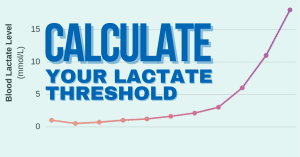Do your toughest workouts always get off to a bad start?
When I first started running, the first repeat of every workout—and the first half mile of every race—felt like a terrible shock to my system.
“There’s no way I can keep this up for three miles,” I’d think to myself at the start of a race. After a few minutes, I’d be feeling better, but I always thought it was strange that I felt so bad at the beginning of workouts and races.
It wasn’t until much later that I learned there’s a scientific explanation for why I always felt sluggish at the beginning of a hard effort—and even better, there’s a scientific way to avoid that sensation and improve your performance.
What’s the trick? It’s called a priming bout.
In this article, we’re going to dig deep into the science on…
- What is a priming bout
- The research on how and why it improves performance
- The how and when to incorporate it into your training and racing
What is a priming bout, and why does it help improve performance?
The basics of doing a priming bout are simple: after doing a standard warmup, you run for four to six minutes, at about 8k–10k effort, aiming to finish this priming bout around 10–20 minutes before starting your actual workout or race.
To understand why priming exercise works, though, we need to back up a bit and look at what happens inside your body when you start running.
First, let’s take the example of an easy run.
In the first two to three minutes, your heart rate and oxygen consumption rise sharply, then plateau.
If you’re running at an even pace (and on a day with cool temperatures), both of these metrics will remain unchanged, even ten or 20 minutes into your run.
The story is a little different at higher intensities.
When you start a 5k, for example, your heart rate and oxygen consumption rise quickly for the first two or three minutes of the race, then almost plateau—but instead of flattening out completely, both metrics continue to drift upward more gradually.
By ten or 15 minutes into the race, they’ve drifted all the way up to their maximum values: your heart rate is at your HRmax, and your oxygen consumption is at VO2max.
This slow rise in oxygen consumption (which drives the heart rate increase) is called the slow component of oxygen kinetics, and it’s the main factor behind why priming bouts work [1].
Priming works because it speeds up this slow component of oxygen consumption.
In other words, your oxygen consumption rises faster, and sooner, during a hard effort if you’ve done a priming bout.
Because your tissues are getting more oxygen earlier into your workout or race, you don’t need to dig into your anaerobic energy reserves while you wait for your oxygen consumption to “catch up.”
Requirements for an effective priming bout
Since priming relies on accelerating your body’s slow component of oxygen kinetics, a priming bout needs to actually target this mechanism to be effective.
The science behind priming puts a few requirements on the structure of an effective priming bout.
First, priming needs to be at a metabolically unsustainable intensity: easy to moderate running won’t do the trick.
In practice, this means you should run at about 8k to 10k effort for your priming bout.
Second, your priming bout needs to be long enough to allow the slow component of oxygen kinetics to develop.
So, the bout should ideally last four to six minutes—any less and your body won’t have enough time to fully ramp up the slow component (though shorter priming bouts do still have some benefit).
Third, you need enough time between your priming bout and the start of your workout or race to recover.
Remember, you’re burning through anaerobic energy during the priming bout, so you want to regenerate that energy before the main event!
The optimal structure of a priming bout: 4-6 minutes, ending 10-20 minutes before your race
A detailed study from the University of Exeter tested several combinations of priming bout intensity and recovery in a group of cyclists [2].
The results showed just what we’d expect: there’s a trade-off where more intense priming bouts accelerate oxygen uptake more sharply, but at the cost of eating into your anaerobic energy reserves.
The most extreme protocol (6 minutes of hard exercise, a 3 minute rest, then a high-intensity ride to exhaustion) diminished endurance compared to no priming exercise at all.
However, the most effective protocols—which involved nine or 20 minutes of rest between the priming bout and the ride to exhaustion—led to a 20% improvement in time to exhaustion.
Though this study and much of the other foundational research on priming used cycling, the same benefits have been found in running, even with shorter bouts of priming before an 800m time trial [3].
When should you avoid priming exercise?
The mechanisms behind priming also suggest there are some cases where it doesn’t make sense to use—or at least where the benefits will be smaller.
Less-fit runners may not benefit as much from priming, for two reasons.
First, they’re less able to recover from the initial hit to their anaerobic energy reserves. Second, because of their lower VO2max, the magnitude of the benefit from accelerating oxygen kinetics just isn’t as large.
Priming is also less useful for longer races like the half marathon or the marathon (and workouts at MP or HMP) [4].
In these events, oxygen consumption reaches a plateau eventually, and the hit to your anaerobic energy stores in the interim before that plateau isn’t very big, nor is it a major factor in the development of fatigue.
Finally, if you’re injury-prone or trying to keep your mileage low, tacking on a full priming bout might not be a good idea because of the added mechanical stress on your body.
Faster running is more damaging to bone and tendons per mile of running [5], so you want to be careful with adding extra intensity—and four to six minutes at a hard effort can be quite a bit, especially on top of an already-challenging workout or race.
Recap
Priming is a great addition to your warm-up before a race or high-intensity workout.
An effective priming bout consists of 4–6 minutes of running at 8k to 10k effort. You should do this priming bout after your usual warm-up run and strides, but finish it 10–20 minutes before the start of your race.
In workouts, this long delay can be a bit burdensome, so you may want to cut down on the length of the priming bout (and the recovery afterwards), even if this saps some of the benefits. Even 200 meters of priming exercise shows some benefit in runners [3].
Priming is less useful for longer races or workouts—anything slower than threshold pace or thereabouts tends to see little benefit from priming.
So, save this warm-up technique for shorter races and more intense workouts.




